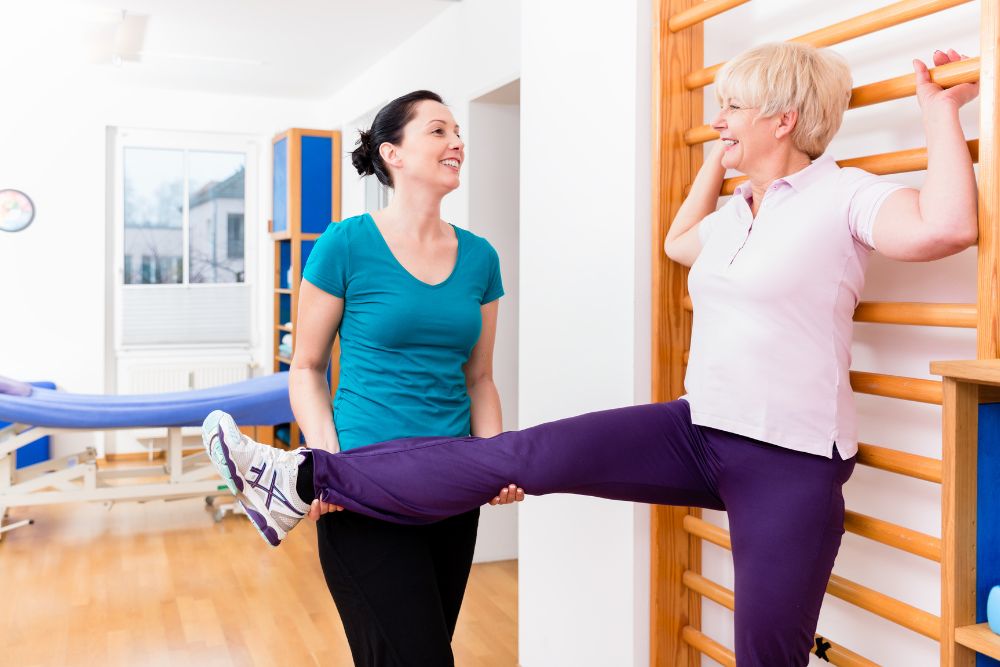
To achieve optimal performance without pain or discomfort, you need proper joint mobility and flexibility. Joints are points of the body where two or more bones come together; these complex systems support the body and make it possible for you to move and interact with your environment. Mobility refers to your joints’ range of motion and how they move within their specific sockets. Flexibility is a muscle’s ability to lengthen without engagement. It also refers to muscles’ pliability (i.e., their ability to bend without breaking). Proper flexibility is essential for attaining adequate mobility.
Keeping your joints in tip-top shape is a major aspect of living well and feeling good, so it’s strongly recommended that patients do whatever they can to promote proper joint function. If you’re dealing with pain or an injury and are looking for ways to improve joint mobility and flexibility to support your healing journey, it’s best to discuss any new exercise regimen with your doctor beforehand, especially if you’re working with an orthopedic specialist.
Exercises to Support Joint Mobility and Flexibility
Various exercises can help support and maintain your joint health and function, particularly those that are low-impact on your joints, such as walking. Strength training is also important, as it can help provide significant joint support. This is best done under the guidance and supervision of a medical professional, such as an orthopedic doctor. Discussing your particular concerns and needs with a doctor will help you determine your best muscle-building options and related exercises.
Core Strengthening
Incorporating core-strengthening activities into your routine to strengthen your abdominal, back, and hip muscles can be immensely beneficial in improving overall joint mobility and flexibility. Options like pilates and yoga promote balance, helping to reduce fall and injury risks. You should also engage your core when doing other activities, such as walking, standing, or sitting up.
Neck Circles
Neck circles are a common stretching technique that helps improve flexibility in the cervical spine, reduce joint stiffness, and relieve tension in the neck and upper back. This involves slowly and carefully moving the neck in circular motions. To perform neck circles, follow these steps:
- Begin with proper seated or standing posture, with your spine upright and shoulders rolled back in relaxation.
- Gently drop your chin to your chest.
- Slowly roll your head to the right over your right shoulder.
- Gently drop your head back, and slowly roll your head to the left over the left shoulder.
- Gently come back to the center.
- Slowly perform the first few reps on each side.
- Repeat 5 to 10 times, before switching directions and doing the same on the opposite side.
Cat-Cow
A traditional yoga pose, the Cat-Cow position helps to open up the thoracic spine and lubricate the discs. This is vital, as a misaligned spine may cause neurological issues.
- Begin on your hands and knees in a neutral spine position.
- Inhale as you arch your back and tilt your head and tailbone upward. This lets your stomach lower toward the floor.
- Exhale as you round out your back, pull the belly button in, and tuck your chin toward your chest.
- Repeat, following your breath, 5-10 times.
Eat a Joint-Healthy Diet
Joint pain is often the result of flare-ups caused by inflammatory arthritis conditions. In cases like these, research shows that eating foods proven to reduce inflammation and packed with antioxidants, such as those found in the Mediterranean Diet, can potentially alleviate joint pain. It’s recommended that your diet include fresh fruits and vegetables, including cruciferous options like broccoli and cauliflower. These foods contain a natural compound called sulforaphane, which has been shown to reduce inflammation. You could also consider incorporating other anti-inflammatory ingredients, such as turmeric, pineapple, and omega-3-rich seeds (e.g., chia, flaxseed, hemp).
In some cases, your doctor may recommend taking dietary supplements, such as glucosamine, to support joint mobility and flexibility, while also reducing joint pain. Before taking any supplements, you should first discuss it with your doctor.
Keep Your Joints Happy and Healthy
Certain exercises and dietary choices can help you achieve better joint mobility and flexibility, while also supporting your overall health goals. Before beginning any new lifestyle adjustments, it’s best to discuss with your doctor first. The orthopedic specialists of The Orthopedic Health Center can provide you with valuable insights and guidance on the most effective techniques to promote optimal joint function. Schedule an appointment at The Orthopedic Health Center in Hoboken, Jersey City, or Bayonne, NJ today.
Appointments available now.
